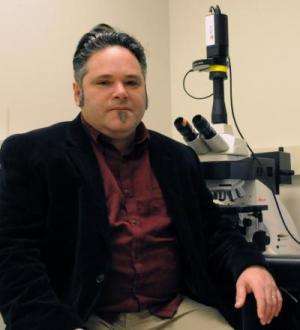Research yields significant insights into a common form of autism

Identifying and understanding the combination of factors that leads to autism is an ongoing scientific challenge. This developmental disorder appears in the first three years of life, and affects the brain's normal development of social and communication skills. Results from a study led by Larry T. Reiter, PhD, at the University of Tennessee Health Science Center (UTHSC) are providing significant insights into the disorder through the study of a specific form of autism caused by a duplication on chromosome 15. This month his work appears in Autism Research, the official journal of the International Society for Autism Research.
Dr. Reiter, who is an associate professor in the UTHSC Department of Neurology, holds joint appointments in both Pediatrics as well as Anatomy and Neurobiology. His study, which began in 2006, is focused on a sub-group of 14 individuals who have a specific chromosome duplication, known as int dup(15)—short for interstitial duplications of 15q11.2-q13. Recruitment efforts were spearheaded by a parent support group for 15q duplication known as the Duplication 15q Alliance. Participants underwent a series of tests in order to better understand what autism looks like for those with this chromosome 15q duplication versus those with autism of unknown origin.
"This is the largest study of this particular sub-group ever undertaken at a single location with the same set of investigators," Dr. Reiter said. "We found several interesting points in the course of the study. Consistent with other much smaller studies, we found that maternal duplications of int dup(15) were always associated with autism, while paternal duplications did not always result in an autism diagnosis. We identified a signal in the brain that suggests the individuals with 15q duplication may have elevated levels of a neurotransmitter called GABA in both maternal and paternal duplication subjects. In addition, we identified previously unknown sleep problems in maternal and paternal subjects, which are more severe in the paternal int dup(15) individuals."
"Not only does Dr. Reiter's study make a significant contribution to what is known about how certain genetic abnormalities directly affect brain function, in this case in a subset of patients with autism, but his approach is a great example of how basic scientists can work with clinicians to translate findings from the research laboratory to actual patients to gain important insight into mechanisms of human disease," said Dennis Black, MD, director of the Children's Foundation Research Institute at Le Bonheur Children's Hospital. "We hope that this will set the pace for more translational collaboration in the future across the UTHSC campus and with other institutions," said Dr. Black, who is also the Vice President for Research at Le Bonheur.















